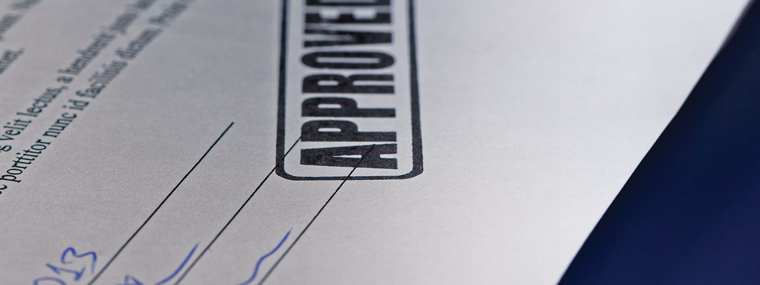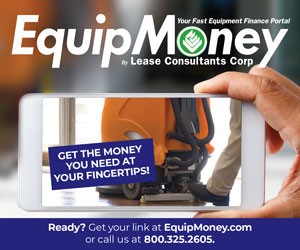
Financial: New Rules to Impact the Lease/Buy Decision
By Mark E. Battersby / Published June 2016

Even as credit becomes more readily available, whether to buy or lease is a question facing the owners of many pressure cleaning businesses. While there is no one correct answer that fits every situation nor every business compared to the simplicity of buying, leasing is far more complicated and may be getting more complex.
Thanks to negotiations between the International Accounting Standards Board (IASB), which sets rules for many countries around the globe, and the U.S. Financial Accounting Standards Board (FASB), which writes the rules in the United States, the lease accounting rules as we currently know them are changing. The new rules will soon require many businesses to add all but the shortest leases to their balance sheets as liabilities, much like debt, affecting the way potential lenders, investors, and suppliers view the pressure washing operation.
New Rules
Today, few leases get recorded because the guidelines allow lease contracts to be structured to appear as simple rentals. If an obligation is not recorded on a balance sheet, it makes a business appear less leveraged than it really is.
The existing guidance under the “Generally Accepted Accounting Principles” (GAAP) says businesses are only required to record lease obligations on their balance sheets when the arrangements are comparable to financing transactions, such as rent-to-own contracts for buildings or vehicles.
According to the Accounting Standards Update (ASU) No. 2016-02, Leases (Topic 842), businesses that lease assets—or lessees—will now be required to recognize assets and liabilities on their balance sheets for leases with lease terms of more than 12 months. Previously, the recognition, measurement, and presentation of expenses and cash flows arising from a lease for lessees primarily depended on its classification as a finance (capital) lease or operating lease. But unlike current GAAP in the U.S., which require only capital leases to be recognized on the balance sheet, the new standard requires businesses to include both types of leases on their books.
Obviously, this is a huge change from current practice requiring lessees to record a large asset and a large liability on their balance sheet. Businesses will no longer be able to structure lease agreements to achieve off balance-sheet reporting and will, in many cases, have to monitor the effect of this change on their debt-to-capital ratio and related debt covenants, among other things.
The new guidance is not expected to prevent any pressure cleaning business from acquiring the equipment and business assets necessary to grow their operations. In fact, there are many reasons to lease equipment, and the primary factors will remain intact under the new rules—from maintaining cash flow, to preserving capital, to obtaining flexible financial solutions, to avoiding obsolescence.
On the other end of the leasing transaction, lessor accounting will remain largely unchanged. The vast majority of operating leases should, for example, remain classified as operating leases, and lessors should continue to recognize lease income for those leases on a generally straight-line basis over the lease term, according to the FASB.
Why Lease?
Equipment leasing is similar to a loan in which the lender buys and owns equipment and then “rents” it to a pressure cleaning business at a flat monthly rate for a specified number of months. Although lease financing is generally more expensive than bank financing, in most instances it is more easily obtained.
Among the reasons given by small business owners for leasing are the ability to have the latest equipment, consistent expenses for budgeting purposes, help in managing company growth, and no down payment.
Leasing offers real advantages, including reduced cash outflows and greater control. But that’s not all. A short list of leasing advantages includes several aspects.
Conventional bank loans usually require more money upfront than leasing.
Leasing generally requires only one or two payments upfront in lieu of the substantial down payments often required to purchase equipment.
Unlike some financing options, leasing offers 100 percent financing. That means a pressure cleaning business can acquire essential equipment and begin using it immediately to generate revenues with no money down.
Best of all, the full amount of the equipment, as well as service or maintenance, can be included in the lease. This spreads the cost over the term of the lease, freeing up cash flow for the pressure washing business now, when needed.
Leasing provides a hedge against technology obsolescence by allowing a business to upgrade its equipment at the end of the leasing term.
Operating lease payments are generally treated as fully deductible business expenses. Obviously, a tax professional should be consulted to determine what percentage of leases can be deducted under the new guidelines, and the advice of an accountant for help phasing in the new leasing guidelines may also prove valuable.
The Nuts and Bolts
In addition to making balance sheets larger, the new guidelines will change income statements for many pressure cleaning businesses. Currently, a business that leases equipment for $1,000 a year for five years would show a $1,000 expense each year.
Under the new guidelines, that business would show a larger expense in early years and a smaller one in later years. That is because the accounting would be similar to a situation where the business had borrowed money to purchase the asset, paying off the loan in equal payments over five years. In early years, the interest expense would be higher than in later ones.
Another significant change will mean that most real estate leases will be accounted for differently. While they, too, would go on the lessee’s balance sheet, the value would be based on the expected lease payments over the life of the lease. The lessee would not, fortunately have to assume that it would exercise renewal options unless those options were so favorable as to clearly give it a financial incentive to renew.
In cases where the lease payment is based on something that will vary—like a store or showroom lease where the lessee pays a fixed rate plus a percentage of sales—the value would not have to reflect the expected additional payments. That would keep the asset value, and the related debt, lower than it might otherwise be.
If, however, the rent would vary based on an index—like the Consumer Price Index—the initial value would be based on the current level of the index. The values of the asset and liability would be updated every year as the index changes.
An Ill Wind Blows Some Good
The new lease accounting guidelines, like the FASB’s slightly older set of rules on recognizing income, also offer a treat for many small businesses, albeit a somewhat hidden and hard-earned good thing. The new leasing guidelines will, admittedly, require a detailed collecting and spread-sheeting of existing leases held by the pressure cleaning business. Fortunately, such an accounting will allow a serious study of how well all of those leases fit into the operation’s business model.
Should the business continue on its past course with automatic “as is” lease renewals? After all, while much focus is on the cost of compliance, there are also ways to identify cost savings by examining the leasing activities of the business. Another question is whether the existing contracts with customers that generate revenue are still the right ones for the business now that new guidelines exist for when revenue must be recognized.
Implementation Now Mandatory Later
Publicly-traded companies will be required to adopt the new standard for fiscal years beginning after December 15, 2018. For calendar year-end public companies, this means an adoption date of January 1, 2019, and retroactive application to previously issued annual and interim financial statements for 2017 and 2018.
Nonpublic companies, such as privately-owned businesses, will be required to apply the new leasing standard for fiscal years beginning after December 15, 2019. Thus, for most pressure cleaning businesses this means an adoption date of January 1, 2020, and retroactive application to previously issued annual financial statements for 2018 and 2019. And, no one will object if an organization jumps the gun in applying the new guidelines.
Although these effective dates might seem like they are quite far away, every contractor and business owner should begin preparing for the new lease accounting requirements now. After all, with many pressure washing operations involved with a number of leases and lessors, the long adoption period can mean fewer surprises with existing leases.
The Question
Should your business lease or buy equipment? Leasing equipment and other business property can be a good option for a business with limited capital or in need of equipment that must be upgraded every few years. Purchasing equipment can be a better option for established businesses or for equipment that has a long usable life.
Although taxes play a role in whether to lease or to purchase, they should not be the deciding factor. But, will the new accounting guidelines and the accompanying impact on the operation’s financial status come as a surprise? Most importantly, when should your pressure cleaning business begin playing under the new rules?




